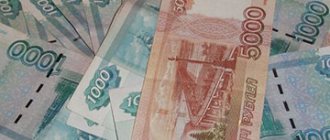Since today, for the most part, residential premises are personal property, partnerships are becoming popular, which themselves make decisions on the management of property belonging to an apartment building (for example, basements, attics, local areas, etc.).
A partnership of real estate owners can be created not only for the joint use of one apartment building, but also for the preservation, maintenance, expansion of the property of several apartment buildings, and the provision of utilities to residents, subject to:
- close proximity of houses with a common border of land plots;
- the presence of general communication systems for engineering and technical support (gas pipeline, water supply and central heating supply pipelines, etc.).
All issues related to housing are regulated by the norms of the Housing Code, as amended, as last amended on January 22, 2019. At the annual meeting of owners of the premises of an apartment building or at an extraordinary meeting, on the initiative of any owner, the charter of the HOA is adopted by counting a majority of votes. It is important to understand that the Charter of the partnership is one of the fundamental documents that defines the main functions, powers and responsibilities of the organization, starting with establishing the procedure for convening and holding a general meeting, notifying members of the HOA about the time, day and place of its holding, and the agenda.
The draft Charter should stipulate:
- who has the right to initiate the convening of a meeting;
- powers of the audit commission;
- the procedure for making changes and additions to the current charter of the partnership.
In connection with the amendments to Chapters 13, 14 of the Housing Code of the Russian Federation, the exclusion of certain articles and the inclusion of a new one, in particular, defining the rights of members of the homeowners’ association and those who are not such, in addition, changes to the rules governing the holding of general meetings, unless changes are made to the adopted earlier the charter, there is a clear threat of forced liquidation of the HOA.
For information
State supervisory authorities have the right to apply to the court for the liquidation of the partnership if, during the inspection, a discrepancy between the charter and the norms of the current legislation is revealed and the shortcomings are not eliminated within the time period established by the order.
Mandatory provisions of the Charter
The mandatory provisions of the HOA charter include the following information, determined by the provisions of Part 2 of Article 135 of the Housing Code:
- on the name of the partnership, which must begin with the words “association of homeowners”, location, subject and purpose of its activities;
- the procedure for the emergence and termination of membership in the HOA;
- the composition and competence of the management bodies of the partnership and the procedure for their decision-making, including on issues on which decisions are made unanimously or by a qualified majority of votes;
- composition and competence of the audit commission or auditor of the partnership.
Alteration
The current charter may be amended. This can only be done by convening a general meeting of residents. The entire procedure for amending a document consists of the following steps:
- organization of the general meeting;
- discussion of changes being made;
- holding a vote among residents for each amendment;
- signing the protocol.
If the initiators of changes to the charter are several people, then they submit their proposals to the chairman in writing with a requirement to consider them at the meeting.
Changes to the charter, as in the case of its adoption, are made only if there are ⅔ positive votes from the total number. The new charter must be registered with the tax office, and the local housing authority must be notified of the amendments.
When creating an HOA, members of the association must draw up an important legal document - a charter, which will regulate all activities of the residents' association. When forming and adopting it, it is necessary to be guided by legal norms and take into account the interests of homeowners. The charter is subject to mandatory state registration, after which it acquires legal force.
General meetings.
— powers of the general meeting of HOA members
The general meeting of HOA members is the highest governing body of the partnership. Part 2 of Article 145 of the Housing Code sets out issues that cannot be transferred to the board or the chairman of the board of the HOA.
— Issues that cannot be included in the competence of the HOA management bodies
The competencies of the meeting of the HOA board, the general meeting of HOA members and the general meeting of owners of premises in the apartment building should not overlap.
How is the founding document adopted?
The adoption of the charter is carried out at a general meeting of tenants-owners of apartments who are members of the HOA. As a rule, the adoption of this document takes place at the founding meeting, but it can also happen on a separate day (read about who the founders of the HOA are, what their rights are, how to leave the ranks and how to change the founders).
REFERENCE! To enact the charter, holders of more than 50 percent of all votes of apartment owners of a given housing organization must vote “for” (clause 2 of article 135 of the Housing Code of the Russian Federation).
Votes are distributed in proportion to the number of square meters owned by property owners.
Voting on the adoption of statutory documents can occur:
- at a general meeting;
- in absentia.
Since half the votes of all apartment owners in the building are required, it may be difficult to gather the required number of residents.
For this reason, paragraph 1 of Art. 47 of the RF Housing Code allows for absentee voting, in which protocols on the agenda are printed for each property owner, and voting takes place at home. The adoption of the charter by absentee voting allows for preliminary discussion of individual items at meetings, and voting after such discussions takes place not on individual items, but on the entire text. Residents can vote yes, no or abstain.
Video with a detailed explanation of how and why the HOA charter is created:
Powers of the HOA board
First of all, the board of the partnership elects from among its members the chairman of the board of the HOA (Part 3 of Article 147 of the Housing Code). Therefore, in the HOA charter it is necessary to fix the term of office of the board and its chairman, as well as the HOA audit commission.
The maximum term of office is 2 years (Part 2 of Article 147 of the Housing Code). Here are the powers that are legally assigned to the HOA board:
1. Draw up estimates of income and expenses of the partnership for the corresponding year, reports on financial activities.
2. Conclude agreements for the management of apartment buildings.
3. Hire and fire workers to service the apartment building.
4. Conclude contracts for the maintenance, operation and repair of common property in the apartment building.
5. Maintain a register of partnership members, office work, accounting and financial reporting.
6. Convene and hold a general meeting of members of the partnership.
GOVERNING BODIES OF THE ASSOCIATION
4.1. General meeting of members, hereinafter referred to as the Congress (conference) of members of the Association.
4.1.1. The congress (conference) of its members has the right to resolve any issues related to the activities of the Association.
4.1.2. The exclusive competence of the congress (conference) is:
- adoption of the Charter of the Association, introduction of additions and changes to it;
- determination of priority areas of activity of the Association, principles of formation and use of its property;
- election of the President - Chairman of the Board of the Association (hereinafter referred to as the “President”);
- election of the Association Board;
- election of the Association's audit commission;
- election from among its members of the Vice-President(s) - Deputy Presidents;
- approval of decisions of the President on the appointment and dismissal of the Executive Director of the Association (hereinafter referred to as the “Executive Director”);
- determining the amount and procedure for making contributions of members of the Association;
- approval of reports of the Management Board on the results of its activities;
- making a decision on liquidation or reorganization of the Association.
4.1.3. Congresses (conferences) are held at least once every two years. Congresses (conferences) are convened by decision of the President of the Association, the Board of the Association, at the request of at least one third of its members. The Board is obliged to notify all structural units and all members of the Association about the convening of the congress (conference) no later than thirty days before the scheduled date of the congress (conference) by registered letters or telegrams with notification of their delivery to the addressees.
4.1.4. The norm of representation and the procedure for electing delegates to the congress (conference) are determined by the Board.
4.1.5. The congress (conference) is valid if delegates representing more than half of the Association members participate in it. In the absence of a quorum, a date is set (no later than three months) for a new congress (conference), which is valid regardless of the number of participating delegates and the number of members of the Association they represent.
Decisions of the congress (conference) are made by a simple majority of votes of the members (delegates) present. Decisions on issues of exclusive competence are made at the congress (conference) by a two-thirds majority of the Association members.
4.2. Board of the Association.
4.2.1. In the periods between congresses (conferences) of the Association members, the general management of its activities is carried out by the Association Board.
4.2.2. The Board of the Association is elected by a congress (conference) of members of the Association from among the top officials of member organizations of the Association, representatives of regional and other branches of the Association, delegated by the congress (conference) of participants in the branches.
4.2.3. The quantitative composition of the Association Board is determined by the congress (conference) of the Association members, but not less than 15 members.
4.2.4. Members of the Board are elected for a term of three years and can be re-elected an unlimited number of times.
4.2.5. The work of the Board is carried out in accordance with this Charter.
The competence of the Board includes:
- admission of new members of the Association, exclusion of members from the Association;
- determining the work procedure of the Management Board;
- approval of the annual report of the Executive Directorate of the Management Board;
- preparation of changes and additions to the founding documents of the Association, Regulations with subsequent approval of changes and additions at the congress (conference);
- organization of branches and representative offices of the Association;
- establishment of enterprises provided for by this Charter;
- approval of annual accounting, financial and other reports of the Association.
4.2.6. The Board has the right:
- make a statement and make proposals on behalf of the Association;
- create their own working bodies and determine their rights and responsibilities within their competence;
- delegate part of its functions to executive bodies;
- resolve other issues other than those falling within the exclusive competence of the congress (conference) and the President of the Association.
4.2.7. The Board meets as necessary, according to the decision of the President of the Association. The President is obliged to notify all members of the Board no later than ten days before the scheduled date of the meeting in the form previously agreed upon by the decision of the Board. A meeting of the Management Board is valid if more than half of the members of the Management Board participate in its work. Decisions of the Management Board are made by a simple majority of the members of the Management Board participating in the meeting. In case of equality of votes, the decision for which the chairman of the meeting voted is adopted. In its work, the Board is guided by the Charter of the Association, decisions of congresses (conferences) of members of the Association, its own decisions, as well as the Regulations on the Board.
4.3. The President is elected at a congress (conference) of members of the Association for a term of three years and can be re-elected an unlimited number of times.
4.3.1. The competence of the President of the Association as Chairman of the Board of the Association includes:
- Conducting a meeting of the Management Board;
- organization of implementation of congress (conference) decisions;
- organization and management of the work of the Board;
- organizing control over the implementation of decisions of the Management Board;
- without a power of attorney, representation of the Association in all institutions and organizations.
4.3.2. The President proposes for approval to the Congress of Members (Conference) candidates for the Executive Director and the Executive Directorate of the Association, candidates for deputy executive directors and the Chief Accountant of the Association.
4.4. Vice President(s) - Deputy Chairman(s) of the Board perform(s) work on organizing the activities of the Association in certain areas, perform(s) the duties delegated to them by the President, and also perform(s) on behalf of the President in the event of his absence responsibilities. The term of office of the officials specified in this paragraph of the charter is one year.
4.5. Executive Directorate.
4.5.1. The Executive Directorate is the body of the Association that organizes and carries out its financial, economic and other activities. The work procedure of the Executive Directorate is determined by the Regulations on the Executive Directorate, which is approved by the Congress of Members (Conference).
4.5.2. The work of the Executive Directorate is led by the Executive Director, elected from among the members of the Congress (Conference), for a period of three years, who:
- provides organizational preparation for meetings of the Management Board, maintaining its minutes and drawing up final documents;
- organizes interaction between members of the Management Board between its meetings;
- coordinates the work of the Management Board;
- organizes and manages the work of the staff of the Executive Directorate of the Association and bears full responsibility for the implementation of the instructions of the Board and compliance with financial, contractual and labor discipline by the employees of the Executive Directorate;
- without a power of attorney on behalf of the Association, within the limits of his powers: a) opens bank accounts and disposes of all the property of the Association in accordance with the directions of spending funds and the amount of financing for them approved by the Board; b) makes all kinds of transactions and other legal acts related to the statutory activities of the Association;
- delegates representatives of the Association to other organizations and meetings and recalls these representatives;
- issues orders and gives instructions mandatory for all employees of the Executive Directorate, issues powers of attorney to represent the interests of the Association, applies incentives and penalties;
- The Board of Trustees takes other actions within the limits of its powers defined by this Charter and in accordance with the current legislation of the Russian Federation.
4.6. Board of Trustees of the Association
4.6.1. The Board of Trustees is the body of the Association that supervises its activities, the adoption of decisions by other bodies of the Association and ensuring their execution, the use of the Association’s funds, and the Association’s compliance with legislation. In addition, the main task of the Association's Board of Trustees is intellectual, informational, financial, material and organizational support for the activities of the Association.
The Board of Trustees carries out its activities on a voluntary basis.
4.6.2. The Board of Trustees is formed by the Board of the Association for a period of 3 years from among citizens and representatives of organizations who have made a significant contribution to the activities of the Association, as well as from among persons with generally recognized services to science, education, the cultural and public sphere of the Russian Federation and other countries.
If, after the expiration of the term of office of a member of the Board of Trustees, he is not re-elected, then he retains his powers until his re-election.
4.6.3. The competence of the Board of Trustees includes resolving the following issues;
- raising funds to ensure the activities and development of the Association;
- improving the material and technical base of the Association;
- review of projects and activity programs of the Association;
- development of proposals for attracting additional intellectual resources and material resources;
- making decisions to prohibit the spending of Association funds received in the form of donations if they are used for purposes not specified by the donor when making the donation;
- making decisions to include issues on the agenda of a meeting of the Management Board;
- exercising supervision over the activities of the Association from the point of view of the legality and appropriateness of spending the Association's funds.
4.6.4. The Chairman of the Board of Trustees is appointed by the Board from among the members of the Board of Trustees. The Chairman directs the work of the Council, appoints and convenes meetings, manages the work of the Board of Trustees, signs minutes of meetings and other documents of the Council.
4.6.5. The Board of Trustees meets as needed, but at least once a year.
Powers of the chairman of the HOA board
The charter must define the range of issues on which the chairman of the board has the right to make decisions independently (part 2 of article 119, part 2 of article 149 of the Housing Code). For example, give the chairman of the board the right to:
- select contractors and enter into contracts with them on behalf of the partnership;
- select and purchase materials, equipment and other products necessary for the maintenance of common property within the approved budget;
- select and purchase the tools necessary to manage the apartment building within the approved budget (computer, desktop, subscription to a professional magazine, etc.)
Manager at HOA
The manager may be a citizen who was hired to perform management and administrative functions for the maintenance and repair of common property in the apartment building. The manager does not have to own property in the apartment building and be on the board of the HOA. A legal entity can also become a manager in an HOA.
The manager takes office by mutual agreement of the parties; a civil law or employment contract can be concluded with him. In an HOA, the decision to hire a manager is most often made by the board or chairman.









